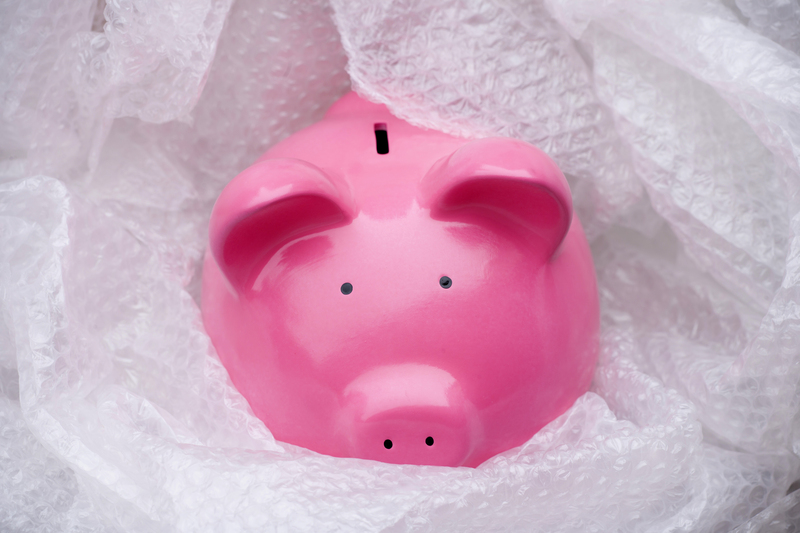Step-by-Step Guide for Relocating Beds and Mattresses
Posted on 27/05/2025
Relocating beds and mattresses is often one of the most challenging parts of any home move. These bulky items require careful planning, the right tools, and a little muscle. However, with a thorough guide and some expert tips, you can move your bed and mattress safely, efficiently, and even without professional movers. Whether you're upgrading your living situation, moving to a new city, or simply reorganizing rooms, this comprehensive guide will walk you through every essential step.
Why Properly Relocating Beds and Mattresses Matters
Improper handling during bed and mattress relocation can lead to significant risks, including:
- Physical damage to frames, slats, or the mattress core
- Stains, tears, or soiling of your bedding investments
- Personal injury from awkward lifting or heavy loads
- Transportation issues such as not fitting through doorways, halls, or your vehicle
Protecting your sleep quality begins with protecting your mattress and bed during the big move. Not sure where to start? Let's break it down step by step.

1. Prepare and Plan Early
Take Inventory and Measurements
Before moving anything, measure your bed frame, headboard, and mattress to determine the best dismantling and transportation method. Don't forget to:
- Compare dimensions to doorways, staircases, and elevator entries
- Make note of screws, fittings, or special tools needed to disassemble the frame
- Check if your bed type (platform, box spring, storage, adjustable) requires extra care
Gather Supplies for Mattress and Bed Moving
- Mattress bag or plastic wrap: Keeps your mattress protected from dirt, dust, and moisture
- Furniture sliders and straps: Make it easier to move heavy sections and prevent floor damage
- Basic hand tools: Screwdriver, Allen wrench, and pliers for disassembly
- Ziploc bags for storing bolts, nuts, and other small parts
- Blankets or padding: Protects bed frame pieces against scratches
- Moving dolly: Essential for larger frames or thick latex and memory foam mattresses
2. Disassemble the Bed Frame Properly
Remove Bedding and Accessories
- Take off all bedding, throw pillows, and accessories
- Store linens in a sealed bag to keep them fresh for your new home
Disassemble in the Right Order
Each bed frame is unique, but here's a common sequence for relocating bed frames:
- Start with the mattress and box spring. Remove these and set aside.
- Detach the headboard and footboard using the proper tool. Some frames require an Allen wrench or screwdriver.
- Disassemble side rails and slats carefully, stacking them in sets for easy reassembly.
- Keep all hardware in a labeled bag taped securely to one of the frame sections.
Tip: Take pictures during disassembly. This makes it easy to remember which part goes where when setting up later.
3. Safely Pack and Wrap Your Mattress and Bed
Mattress Preparation Tips
- Use a mattress bag: For maximum protection against tears, stains, and dust, encase your mattress in a thick plastic bag. Standard mattress bags are available for Twin, Full, Queen, and King sizes.
- Seal with tape: Ensure both ends are securely closed; reinforce the seams for bulky or heavy mattresses.
- Do not fold foam or hybrid mattresses: Unless the manufacturer says it's safe, avoid folding, which can cause internal damage.
- Label the bag: Use a marker to write the bed size and destination room on the outside for easy unloading.
Protect Bed Frame Components
- Wrap wooden or metal rails: Use moving blankets or old towels to pad fragile areas and prevent scratches or dents.
- Secure loose ends: Use bungee cords or strong tape to bundle rails and slats together.
- Protect hardware: Store screws, bolts, and washers in a zip-top bag and attach to the matching piece.
4. Moving Beds and Mattresses: The Heavy Lifting
Getting Ready for the Move
Make sure the path out of your room and through your home is clear of obstacles. Open doors fully, remove wall decor, and secure pets or children to ensure a smooth passage.
Carry Mattresses Safely
- Team up: Mattresses are awkward to carry solo. Enlist a helper and lift from each end.
- Bend and balance: Hold mattresses upright, bend slightly, and let the weight rest on your legs, not your back.
- Use a dolly or sliders for larger or heavier models, such as king-size or latex beds.
Navigating Tight Spaces
- Measure before moving: If the mattress barely fits through the door, angle it gently.
- Stand it on its side and pivot around corners.
- Remove doors temporarily if needed, but only as a last resort.
Transporting the Bed Frame
- Keep rails, slats, and posts grouped: Secure long pieces with tape or plastic wrap.
- Protect finishes: Rest finished surfaces on padding in the moving vehicle.
- Keep the hardware bag with the main parts so you don't lose essential bolts or screws in transit.
5. Loading Mattresses and Beds into a Vehicle
Choose the Right Moving Transport
Safely relocating mattresses and beds generally requires a pickup truck, moving van, or box truck, especially for Queen or King sizes. Some key things to remember:
- Never tie a mattress to the roof of a sedan--it's unsafe and often illegal.
- Lay the mattress flat in the cargo space if possible to avoid warping or bending.
- Avoid stacking heavy objects on top of mattresses, as this leads to deformity.
Securing Your Mattress and Frame for Transit
- Use straps or bungee cords: Anchor the mattress and any bulky frame pieces so they don't slide around.
- Keep mattress away from sharp objects: Avoid punctures by positioning well-padded rails at the sides.
- Put delicate hardware in the cab: Store anything small and critical in a glove box or personal bag.
6. Reassembling Beds and Mattresses at Your New Home
Prep Your Room
- Clean the floor and make sure the area is clear of debris.
- Determine the best bed orientation before reassembly--this avoids extra heavy lifting later.
Step-by-Step Bed Frame Assembly
- Lay out all parts and hardware. Double-check the bag of screws, bolts, and brackets.
- Follow manufacturer instructions or your assembly pictures. Begin with the main rails, then attach the headboard and footboard.
- Secure side rails and insert slats. Test for stability before adding the mattress.
- Place the mattress and box spring, ensuring they're centered and level.
Mattress Care After a Move
- Allow a few hours for the mattress to breathe before making the bed--especially for foam beds, which may need time to regain shape.
- Check for any signs of damage, mold, or moisture. Leave unwrapped in a dry room if possible.
- Rotate the mattress as you set it up to maintain even wear.
Expert Tips for Moving Beds and Mattresses
- Invest in quality mattress bags: Cheap plastic can tear easily, so choose a thicker, reusable bag if you move often.
- Rent a moving dolly: It's especially handy for thick memory foam or latex mattresses that are heavy and floppy.
- Remove legs or casters: Take off feet, wheels, or casters from bed frames before moving to avoid damage to both the floor and bed.
- Long-distance bed moves: For cross-country moves or storage needs, consider vacuum-sealing foam mattresses (if allowed by the manufacturer).
- Label everything: Place clear labels on hardware bags and frame components to save time during reassembly.

Frequently Asked Questions About Relocating Beds and Mattresses
Can you transport a mattress by bending or folding it?
Only certain foam mattresses can be carefully folded for short periods if the manufacturer approves. Bending inner springs or hybrid mattresses can cause internal damage and void your warranty. Always transport your mattress flat when possible.
How do you move a bed and mattress without professional movers?
With careful planning, a reliable helper, and the right tools--such as a dolly, mattress bag, and supporting straps--almost anyone can safely move their own bed and mattress. Renting a small moving van often makes relocation much simpler.
What's the best way to clean a mattress before moving?
Vacuum the surface thoroughly, spot-clean any stains, and let the mattress dry completely before encasing in plastic or a bag. This prevents odors or mildew during transport or storage.
Can a mattress get bed bugs during moving?
If your mattress comes in contact with contaminated moving vans, used blankets, or floors in storage areas, there's a risk. Wrapping your mattress properly is the best defense against pests during relocation.
Summary: The Key Steps to Relocating Beds and Mattresses
- Measure and plan carefully before moving to ensure all parts fit through doors and travel safely.
- Disassemble and pack every component securely, using protective materials and labeled storage for hardware.
- Use proper lifting techniques and equipment to avoid injury and keep mattresses in good shape.
- Transport mattresses flat in a suitable vehicle, and secure both mattress and bed frame tightly.
- Reassemble at your new home using clear labels, instructions, and a little patience.
By following this detailed step-by-step guide for moving beds and mattresses, you'll relocate your bedroom essentials with less stress and prevent expensive mistakes. Remember, a good night's sleep in your new home starts with a safe, damage-free move!







